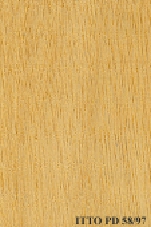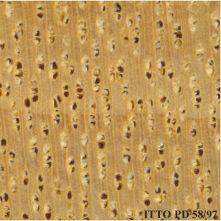
KADAM (Anthocephalus chinensis)
Trade Name
Kadam
Scientific Name
Anthocephalus chinensis (Lam.) Rich. ex Walp.
Family
Rubiaceae
Common Names
Ye-ma-u; Vellei kadambu; Vella cadamba; Selimpoh; Sanyepang; Sanko; Rudrak-shamba; Roghu; Phuya; Pedda-soko; Pandur; Nhyu; Mau-lettan-she (Myanmar); Maoo; Ma-ukadon; Ma-uguangdon; Ma-u; Ludai; Limpoh; Labula; Kurambo; Kola ayila; Kodum; Kodavara; Klampeyan; Kelempajan; Kelampayon; Kalempayan; Kadwal; Kadda vailu; Kadambo; Kadambe; Kadaga; Kaatoan bangkal; Heltega; Gao; Entipong; Embul-bakmi; Chakka; Cadamb; Bol-kadam; Bangkal; Attu-teak; Attu tek; Atta vanji; Arsanatega; Sempayan (Malaysia); Jabon (Indonesia); Kadam (Malaysia); Laran (Malaysia); Kaatoan-bangkal (Philippines); Ma-lettan-she (Myanmar)
Scientific Name Synonyms
Neolamarckia cadamba (Roxb.) Bosser; Anthocephalus indicus A. Rich; Anthocephalus cadamba Roxb.
Description Of The Tree
Botanical Description
It is a medium-sized to large tree up to 45 m tall. The bole is straight and cylindrical and branchless for more than 25 m, up to 100 cm in diameter but generally less. Sometimes with small buttresses up to 2 m high and extending up to 60 cm from the trun
Natural Habitat
It is reported to grow best on deep, moist, alluvial sites, often in secondary forests along riverbanks. It is found in lowland forests up to montane forests of about 1,000 m of altitude.
Natural Distribution
It is widely spread from India to the Malayan Peninsula, Indonesia, Philippines, New Guinea, and Australia.
Plantations Available?
Plantations are reported in South Africa, Puerto Rico, Surinameand Taiwan. Recommended for forest plantations in Malaysia.
Wood Identification
Anatomic Description Of Wood
Wood diffuse porous. Vestured pits. Vessels per mm2 less than 6 (rare). Simple perforation plates. Vessel-ray pits similar to intervessel pits in size and shape. Intervessel pits small, 7 micras or less. Apotracheal axial parenchyma diffuse and/or diffuse in aggregates. Axial parenchyma reticulate. Axial parenchyma scalariform. Crystal sand. Body ray cells procumbent with over 4 rows of upright and/or square marginal cells (Kribs-I). Fibers with distinctly bordered pits.
-
 Wood Macro Photo Tangential Plane
Wood Macro Photo Tangential Plane
-
 Wood Micro Photo Of Transversal Section
Wood Micro Photo Of Transversal Section
Availability
Cites Status
Unrestricted
General Wood Description
Odor
It usually has no odor or taste, but wood of an Assam variety is reported to have unpleasant odor.
Color
The sapwood is pale yellow and not distinguishable. The heartwood is whitish with light yellow luster and cream-colored when dry.
COLOR INDEX (1=Black, 7=Light yellow,white)
5
Grain
It is very straight.
Texture
The texture is medium, its vessels contain dark deposits.
Natural Durability
It has very low natural resistance to decay. It is vulnerable to attack by insects and it is also prone to blue stain.
Natural durability index (1= Very high durability, 7=Vey low durability)
5
Silica Content
Silica Content: It contains 0.1% silica. Silica Value: 0.1
Resistance To Impregnation
It absorbs preservatives easily.
Wood Physical Properties
Basic Density or Specific Gravity (O.D. weight/vol. green) (g/cm³)
0.33
Air-dry Density (Weight and volume at 12%MC) (g/cm³)
0.35
Total shrinkage Tangential (Saturated to 0%MC) (%)
5.5
Total shrinkage Radial (Saturated to 0%MC) (%)
2.2
Drying Defects
Ease of Drying: Air drying is reported to be fairly fast. Boards of 13 mm and 38 mm thick take respectively 2.5 months and 4 months to air dry. Drying Defects: There is a slight risk of splitting and surface checking, but a high risk of sap-stain and a moderate risk of insect attack while drying.
Recommended Dry Kiln Schedule
JP-25; UK-H; US-T10-D4S
Dimensional stability ratio (Total Tangential Shrinkage %/Total Radial Shrinkage %)
2.6
Wood Chemical Properties
Wood Mechanical Properties
Bending Strength (MOR),12%MC (kgf/cm²)
586
Stiffness (MOE) 12%MC (kgf/cm²)
70815
Compression parallel to fiber 12%MC (kgf/cm²)
287
Compression perpendicular to fiber 12%MC (kgf/cm²)
36
Shear strength radial 12%MC (kgf/cm²)
63
Janka hardness (side) 12%MC (kgf)
233
Janka hardness (end grain) 12%MC (kgf)
309
Workability
Sawing
This species is easy to saw.
Rotary Veneer Cutting
It peels readily at a cutting angle of 92 degrees, producing good veneer 1.5 mm thick.
Sliced Veneer
It peels readily at a cutting angle of 92 degrees, producing good veneer 1.5 mm thick.
Machining
This species is easy to machine.
Planing
Planing of this species is good to fair.
Moulding
It is easy to mold.
Turning
30
Boring
Boring operations are reported to be fair.
Mortising
This species is difficult to mortise.
Nailing
It is easy to nail.
Gluing
It has a good behavior in gluing.
Sanding
This species is reported to be easy to sand.
Polishing
Polishing of this species is reportedly easy.
Response To Hand Tools
Response to hand tools is reported to be good.
REFERENCED USES
End Uses Summary
HOUSING GENERAL, joists, flooring, frames, shutter boards, FURNITURE AND CABINETS, PLYWOOD AND VENEER, cores, TURNING, TOOLS, PACKING, OTHER AND MUSICAL INSTRUMENTS, pencil, matches, shingle, moldings
General Housing
- 10 - Silica in Timbers
Joists
- 12 - Tropical timbers of the world. Part I-Tropical American Species
Flooring
- 14 - Handbook of Hardwoods
Frames
- 16 - Woods of the World
Shutter Boards
- 20 - Prospect: The wood database
Furniture Cabinets
- 21 - Tropical timbers of the world. Part III-Southeast Asian and Oceanian Species.
Panels, Veneers
- 25 - Directory of Timber Trade Malaysia
Cores
- 27 - Embassy of Brazil in Japan
Turning
- 30 - Embassy of Honduras in Japan
Tools
- 42 - Utilización Industrial de Nuevas Especies Forestales en el Perú.
Packing
- 45 - Recopilación y Análisis de Estudios Tecnológicos de Maderas Peruanas
Pencils
- 67 - Maderas latinoamericanas. VIII, Calophyllum brasilense, Couratari panamensis, Dendropanax arboreum y Bombacopsis sessilis
Matches
- 71 - Proprietes physiques et mecaniques des bois tropicaux, premier supplement
Shingles
- 77 - Amazonian Timbers, Characteristics and Utilization Volume I; Tapajós National Forest
Molding
- 79 - Padronização da Nomenclatura Comercial Brasileira das Madeiras Tropicais Amazônicas, Sugestão
Please Provide Information To View Producer Information